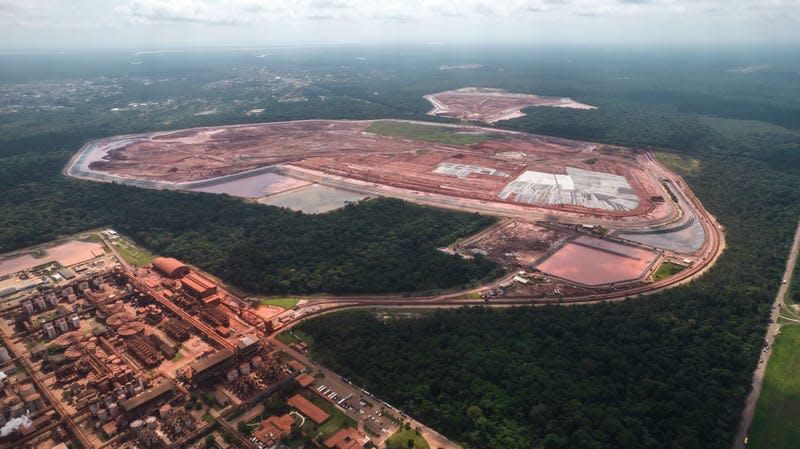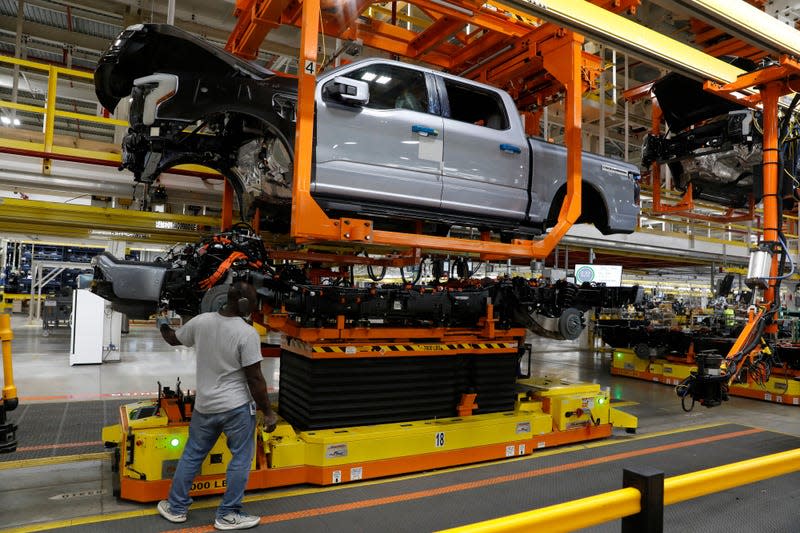Mining Aluminum for the Ford F-150 Lightning Is Allegedly Making Thousands in the Amazon Rainforest Sick

A class-action lawsuit against the owner of a refinery that produces aluminum ore used to make cars and EVs, including the Ford F-150 Lightning, argues that the refinery is polluting nearby rivers and streams, and endangering thousands of Brazilians in the process. The lawsuit represents 11,000 residents who live in communities close to the Hydro Alunorte refinery in Barcarena, Brazil, which is owned by the Norwegian aluminum company, Norsk Hydro ASA.
The suit’s plaintiffs say that Norsk Hydro is responsible for an epidemic of illness that stems from rampant pollution at the refinery; those living in communities nearby allege that toxic waste is seeping into the water supply of Barcarena, according to an investigation by Bloomberg. The lawsuit will try to hold Hydro accountable for 10 incidents that have polluted and endangered the community, and these incidents go back for nearly two decades.
Read more
The Hydro refinery is allegedly releasing trace amounts of aluminum and other heavy metals (arsenic, chromium, cadmium, lead and nickel) into the area, which has led to birth defects and cancer, among other horrific illnesses.

According to the report, ore from Alunorte can be traced to aluminum used to build the Ford F-150 Lightning in the U.S. automaker’s Rouge Electric Vehicle Center and Rouge assembly complex, overall, where the best-selling vehicle in America is made. Go read this report, because it’s a thorough look into the allegations of pollution in the Amazon, which could only get worse as the industry ramps up production of fully-electric vehicles.
Bloomberg explains that Ford switched from heavy steel to lighter aluminum to build the F-150 in 2015, and now that the truck will be sold as an EV, the company will need to offset the truck’s weight even more due to the F-150 Lightning’s battery. Basically, the advent of EVs will require increased mining and production of the lightweight metal to balance the load of heavy batteries in EV models like the Lightning. Automakers are looking to squeeze every last mile of range out of their upcoming EVs, including Ford.

Whereas the average North American car contains 500 pounds of aluminum, the Lightning’s frame requires 682 pounds to make: the metal is used in the windshield header, frame tubing and exterior panels, as well as the rockers, according to Ford. But since the U.S. produces less than one million tons of the five million tons of aluminum it needs per year, America imports up to 75 percent of all the aluminum made in Canada, which, in turn, is made with ore from Brazil — painfully and dangerously mined from the Amazon rainforest.
The danger doesn’t come from the actual mining per se, as heavy machinery claws rust-colored bauxite from the soil, per Bloomberg, but from the toxic waste of mining and refining bauxite into white alumina powder, which then goes on to become the lightweight metal used to make laptops, phones and cars — both electric and gas-powered.
The byproducts of refining bauxite into alumina have seeped into the water supply in Brazilian communities, and have been for years, argues the lawsuit. In 2018, Norsk Hydro was hit with a $6.1 million fine for discharging untreated waste water from the Alunorte refinery during a flood. But the pollution goes back decades, and involves a network of mining majors in Brazil — including Alcoa and Rio Tinto.

 Yahoo Autos
Yahoo Autos 